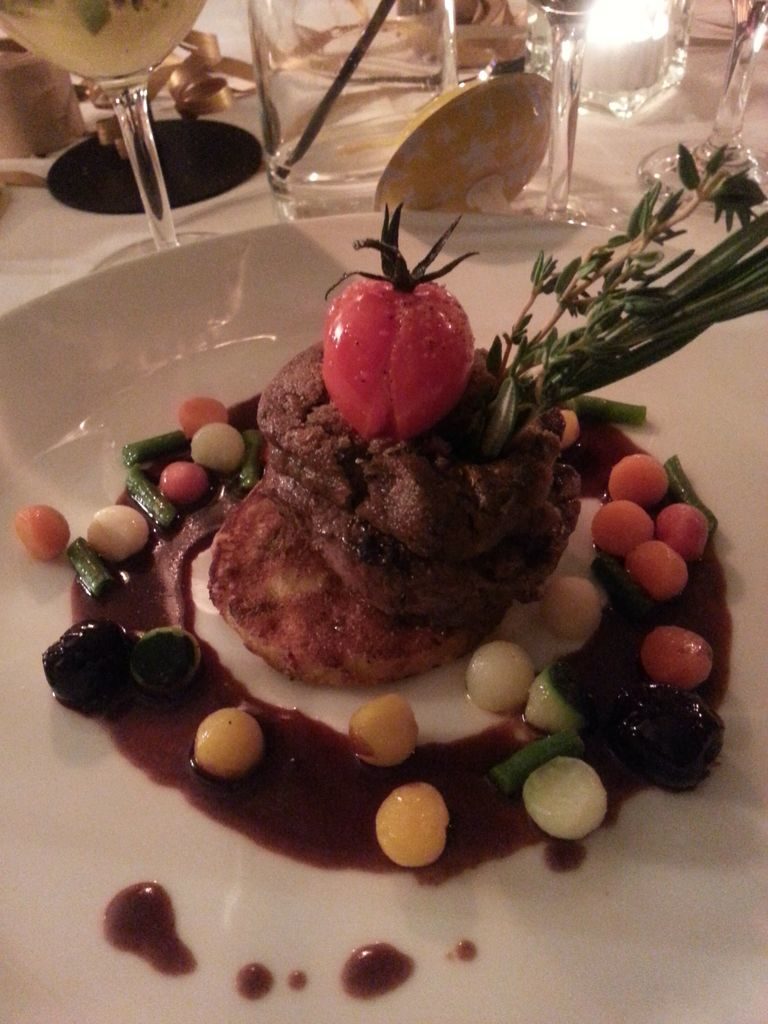Published by LIGAYA MISHAN

IN FOOD, AS IN LIFE,
we prize what is young and unsullied by time: tiny wild blueberries that drop off the bush with the slightest tug; a sea urchin pried from a rock and gulped down on the beach; an egg still warm from the nest. We clamor for restaurants where the vegetables on the plate arrive in the kitchen caked in dirt, uprooted from a farm within 100 miles, or, better yet, the chef’s backyard. The less interference was the better. When ripeness is so exalted, cooking is corruption.
But sometimes an ingredient can be too young, callow — as yet uncommitted in flavor. Age brings depth and contours. It pushes past the obvious. If fresh food affirms the splendor of the natural world, aged food speaks to human ingenuity. What is more human than refusing to accept things as they are and believing we can make them better?
We ask sushi chefs,
“What’s fresh today?”
Yet some fish, notably tuna, needs time for the flesh to relax, and may not be considered fit to present to a diner until it’s rested for two weeks or more. Even a fragile macaron, which looks like it might fossilize within an hour of existence, must be left a day or two after baking to give it that classic seesaw of crackle and deflation, shatter, and chew.
Now, forward-thinking chefs are finding the shock of the new in what is quite literally old. Food past its imagined prime can surprise us like the “vintage carrot” René Redzepi started serving at Noma in Copenhagen in 2009. It was a dish borne of scarcity in a cruel winter when Redzepi had to beg farmers for leftover produce; he was given carrots that had been left to languish in the earth in iced-over fields, whose skin was as rough as hiding. By all appearances they were inedible, but once braised for hours like a côte de boeuf, they turned meaty, mineral, and profound.
Some flavors and textures can only be achieved by pushing foods beyond their limit.
Banana bread calls for bananas gone black, verging on mush. Without stale bread, there would be no bread pudding. And what is a fresh salad but a May-December marriage, the bright young greens doused in vinegar that has been bred for months, sometimes years, in darkness, on yeast and bacteria, its sugars turned to alcohol and then acetic acid? Century-old balsamic vinegar is almost too thick to escape the bottle and is worthy of sipping, like port.
Then there are the great wheels of cheese imprisoned in climate-controlled caves and slowly colonized by crunchy white crystals of amino acid as the milk proteins decay. And the slabs of beef that hang in dry-aging rooms as enzymes eat away at their muscle fibers until they’re tender enough to yield at the hovering of a knife and are flooded with glutamate, the amino acid that is the anchor of monosodium glutamate (MSG), which lets a happy note of funk sneak in. (Most steaks are aged at most a few months, but the French butcher Alexandre Polmard offers cuts from cows slaughtered back in 2000 — he was 10 years old then, and his father was in charge — and treated with a process his family calls “hibernation,” which involves blasting the meat with air at subzero temperatures.)
THE DECLINE
toward rot — arrested at the last minute
— is what creates Umami, a flavor that defies categorization, that smacks of deep-sea and forest floor, animal entrails, and sun-gorged tomatoes. Everything that is fermented, too, was en route to death and pulled back from the brink. Pickling is salvation — this was especially true before refrigeration when we needed to eke out supplies to make it through the winter — a mantra newly embraced by chefs and diners across America, from the high-end, avant-garde Catbird Seat in Nashville to Gyst, a chicly low-key, self-proclaimed “fermentation bar” in Minneapolis, to the voraciously beloved Baroo, a tiny temple to the art of fermentation in an L.A. strip mall.
For Kwang,
Uh, the Korean-born chef of Baroo,
the process of pickling mirrors the arc of human life. “You see the youth: fresh, energetic, vibrant,” he says. “The old: comforting, deep, complex.” One of his most celebrated dishes takes Noorook, a mold that is known more widely in the West by its Japanese name, koji, as the base for a creamy porridge of fermented grains, stained pink by beets. (The mold appears as a character in the Japanese manga series “Moyasimon,” under its scientific name, Aspergillus oryzae.) He’s been reusing the same culture since he opened Baroo in 2015, putting a little piece into each dish.
At Shizuka,
a pickle shop in Fukuoka, Japan,
the starter for Nukadoko, a fermented mash of roasted rice bran mixed with salt and water, has survived for 300 years. Boudin Bakery in San Francisco purportedly puts into every loaf some of the sourdough starter begun by its founding baker in 1849. Melissa Weller, of Sadelle’sin New York and Walnut Street Café in Philadelphia, once ordered a 109-year-old starter by mail but found it suspiciously “weird-smelling,” she said. Sometime later, she was given another starter that she realized was The One and has never strayed since, patiently feeding it twice a day, monitoring the froth and bubbles. (Some bakers confess to giving pet names to their starters, like Igor, Shirley, and Homer, “as it should produce many Dohs!” reads an online forum for sourdough enthusiasts.)
Perpetual stews and master stocks have similarly prolonged lives. The century-old restaurant Otafuku, in the Asakusa district of Tokyo, specializes in a long-simmered stew called Oden, with a base of dashi broth first made in 1945. (The kitchen lost its original batch, said to have dated back to the restaurant’s opening in 1916, in an air raid during World War II.) It’s constantly replenished with new ingredients, but a trace of the past remains, as with a cast-iron pan never scrubbed, only rinsed, or a Chinese Yixing teapot, whose porous clay walls absorb the flavors of each brew until you could put nothing in the pot but water and still taste tea.
In August, a fruitcake was unearthed in Antarctica, apparently abandoned by the British explorer Robert Falcon Scott in 1911 (who starved to death on a later expedition). Apart from what one observer described as a faintly “rancid butter” smell, it was deemed “almost edible.” Still, it is not the oldest fruitcake on record: Another, baked in 1878 by Fidelia Bates in a woodstove in Berkey, Ohio, has been passed down through generations. In 2003, Jay Leno took a bite of it on “The Tonight Show,” pondered, and said, “It needs more time.”
It’s easy to laugh at these stories — the fruitcake that wouldn’t die! — but it’s also a luxury, to have so much to eat that we can shove a fruitcake to the back of the cupboard and forget about it for a decade or two. People used to rely on food that could last, like pemmican and hardtack, Spam and Twinkies. (Officially, Twinkies have a shelf life of only 65 days, but experience may tell you otherwise.) The YouTube sensation Crazy Russian Hacker has devoted a series of videos to his ravenous consumption of Meals Ready to Eat (M.R.E.s), field rations designed for soldiers in combat, stowed in hermetically sealed, impact-proof pouches so that the food can last for years.
the chef of the Blue Hill restaurants in Manhattan and Pocantico Hills, N.Y.,
has made it his mission to try to rescue foods considered afterthoughts or undesirable, like fish skeletons, stale bread, and vegetable peelings, all of which could be found on the menu at his wastED pop-up, which took place in New York in 2015 and again earlier this year in London. Barber thinks of the sell-by date on goods as “kind of a con game,” he said. “We need it because we can’t trust our nose — we’ve lost that language.” Still, even Barber wonders if there’s too much emphasis on the trick of “Look at this steak rotting in the Dumpster: I can do something with that!” It makes for a fun show, he feels but obscures the need to address larger structural problems in American agriculture, where waste begins.
It will always be hard to resist the lure of an apple just off the branch or a perfect peach. “There’s nothing better than that true peak of ripeness,” Barber said. “As a chef, you don’t want to mess with that.” But the ingredients that take longer to divulge their pleasures, the ones that require time, patience, and coaxing out into the light — that’s “like leather to a shoe man,” he said. “It calls on our craft
